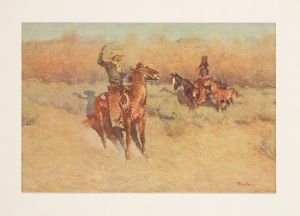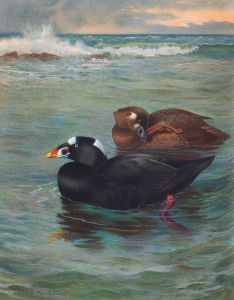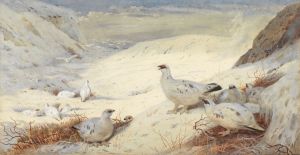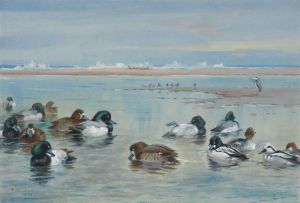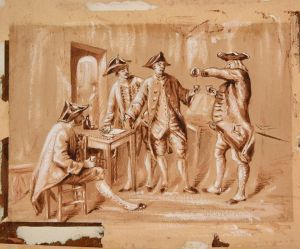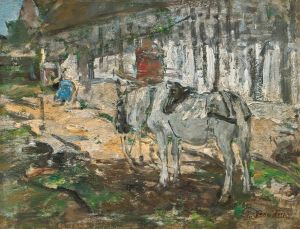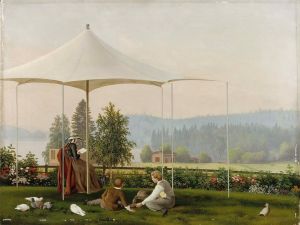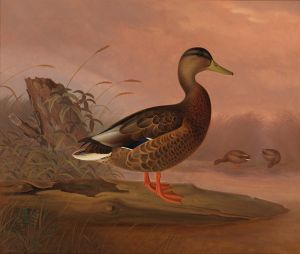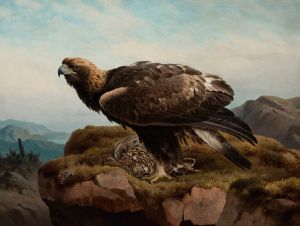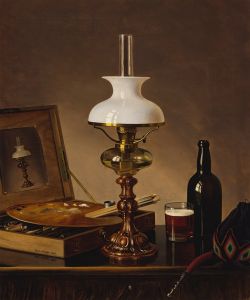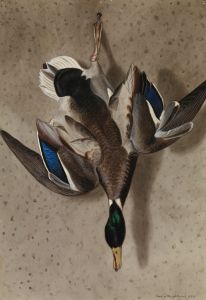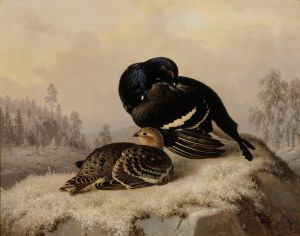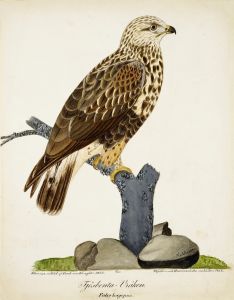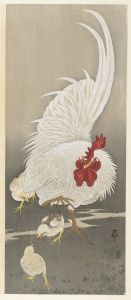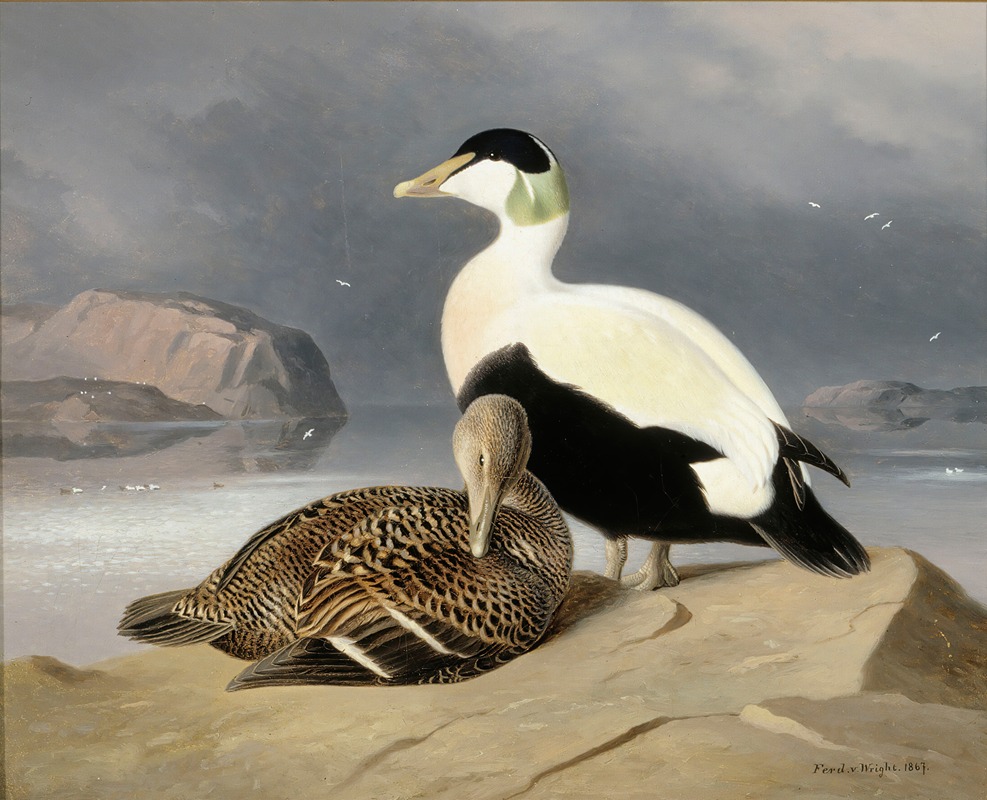
Kaksi Haahkaa
A hand-painted replica of Ferdinand von Wright’s masterpiece Kaksi Haahkaa, meticulously crafted by professional artists to capture the true essence of the original. Each piece is created with museum-quality canvas and rare mineral pigments, carefully painted by experienced artists with delicate brushstrokes and rich, layered colors to perfectly recreate the texture of the original artwork. Unlike machine-printed reproductions, this hand-painted version brings the painting to life, infused with the artist’s emotions and skill in every stroke. Whether for personal collection or home decoration, it instantly elevates the artistic atmosphere of any space.
Ferdinand von Wright was a Finnish painter known for his detailed and realistic depictions of birds and nature. One of his notable works is "Kaksi Haahkaa," which translates to "Two Eiders" in English. This painting exemplifies von Wright's keen observation skills and his ability to capture the essence of wildlife with precision and artistry.
"Kaksi Haahkaa" was created during a period when von Wright was particularly focused on ornithological subjects. The painting features two eider ducks, a species native to the northern coasts of Europe and North America. Eiders are known for their distinctive plumage and are often found in coastal marine environments. Von Wright's portrayal of these birds is not only a testament to his artistic skill but also reflects his deep interest in natural history and his commitment to documenting the wildlife of his native Finland.
The composition of "Kaksi Haahkaa" is carefully balanced, with the two eiders positioned in a naturalistic setting that suggests their typical habitat. Von Wright's attention to detail is evident in the meticulous rendering of the birds' feathers, which showcases a range of textures and subtle color variations. This level of detail is characteristic of von Wright's work and demonstrates his dedication to realism.
Ferdinand von Wright was part of a family of artists, and his brothers Magnus and Wilhelm were also accomplished painters. The von Wright brothers were instrumental in the development of Finnish art during the 19th century, and their work often focused on themes of nature and wildlife. Ferdinand, in particular, gained recognition for his ability to combine scientific accuracy with artistic expression, making his paintings valuable both as works of art and as historical records of the natural world.
"Kaksi Haahkaa" is representative of von Wright's broader oeuvre, which includes numerous paintings of birds and other animals. His work was influenced by the Romantic movement, which emphasized the beauty and majesty of the natural world. However, von Wright's approach was distinct in its emphasis on realism and detail, setting him apart from many of his contemporaries.
The painting is housed in the Ateneum Art Museum in Helsinki, which is part of the Finnish National Gallery. The museum holds a significant collection of von Wright's works, allowing visitors to appreciate the breadth and depth of his contributions to Finnish art. "Kaksi Haahkaa" is an important piece within this collection, highlighting von Wright's skill as a painter and his passion for the natural world.
Ferdinand von Wright's legacy continues to be celebrated in Finland and beyond. His paintings are appreciated not only for their aesthetic qualities but also for their role in documenting the rich biodiversity of the Nordic region. "Kaksi Haahkaa," with its exquisite detail and lifelike representation of eider ducks, remains a testament to von Wright's enduring influence as an artist and naturalist.





